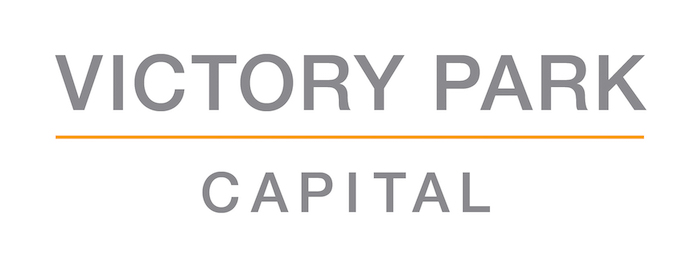John J. Hanley is a Member in the Business Department at McDonald Hopkins and a key contributor to the firm’s Litigation Finance Practice Group. He advises clients across the litigation finance ecosystem on the structuring, negotiation, and execution of complex funding arrangements and financial transactions. With more than 20 years of experience at leading law firms, John brings deep transactional expertise in first- and second-lien credit facilities, private placements, and the purchase and sale of loans, claims, and other illiquid assets.
His clients include litigation funders, specialty finance companies, business development corporations, hedge funds, CLO managers, SPVs, and other institutional investors. John’s practice bridges traditional lending and litigation finance, allowing him to deliver sophisticated, market-informed solutions that align legal risk with commercial strategy.
Below is our LFJ Conversation with John Hanley:
Your team is Chambers-ranked litigation finance deal counsel. How does that recognition reflect the value you bring to clients in structuring funding arrangements?
We appreciate the recognition from Chambers in a field as specialized and fast-moving as litigation finance. For us, that ranking affirms the trust our clients place in us to structure and close their transactions and the respect we’ve earned throughout the litigation finance ecosystem.
At McDonald Hopkins, we get deals done. We prioritize what matters by focusing on value, clarity, and results. Our approach is practical and efficient, guiding clients from NDA to term sheet to definitive documents and, finally, to funding with strategic precision.
You’ve worked extensively in both lending and litigation finance. How does that dual experience shape your approach to structuring deals that align interests across the table?
My lending background grounds me in negotiating and documenting deals designed to achieve client objectives while aligning incentives across counterparties. In litigation finance, those fundamentals still apply, but the environment is more nuanced. Every deal involves its own set of dynamics and considerations.
In lending, you have established credit models, conventional security packages, and repayment terms that follow predictable patterns. In litigation finance, we're operating in a space where deal inputs aren’t standardized. Each transaction is built on a unique case or portfolio, layered with legal, factual, and procedural complexities that defy one-size-fits-all modeling. That nuance demands creativity and precision. There's no single template that works for every matter.
At McDonald Hopkins, we recognize that underwriting is typically the funder’s responsibility. When representing funders, our primary role is to translate that underwriting into a legal structure that aligns with the deal’s risk profile and commercial objectives. From time to time we are also engaged to assist with due diligence on the underlying litigation to help ensure that the legal and procedural posture of the litigation supports the funder’s investment thesis.
When representing funded parties, whether claimants or their counsel, our focus shifts to protecting their upside, independence, and long-term position. That involves more than simply reviewing documents. We must understand how the funder views the case, the risk and return profile, and anticipate how the litigation may unfold. With that knowledge, we are equipped to negotiate terms that are fair, enforceable, and sustainable.
What are some of the key legal or regulatory pitfalls funders and claimants should be looking out for when drafting a funding agreement?
A few stand out:
- Control: Excessive funder control can raise enforceability and ethical concerns. Decision-making authority must remain with the litigant in conjunction with their counsel. Overreach may implicate champerty or maintenance restrictions in jurisdictions where those doctrines are still active and may interfere with counsel’s duty of loyalty. Funders can and should monitor progress, but they shouldn’t steer litigation or settlement decisions. Of course, they can be a valuable sounding board.
- Attorney-Client Privilege: Often underappreciated, this area can present serious risk. If privileged information is shared during diligence or monitoring, the NDA must preserve the common interest doctrine to try to avoid waiver. You can’t take shortcuts here.
- Disclosure Risk: Courts and regulators are asking more questions, particularly in class actions, bankruptcies, and patent disputes. About 25% of U.S. federal district courts have local rules or standing orders requiring disclosure of third-party funding arrangements. Several states have enacted similar laws. These requirements vary by jurisdiction, so agreements should be drafted with the expectation that some level of disclosure may occur. Clarity, compliance, and defensibility are essential.
- Intercreditor Issues: In deals involving multiple funders or creditors, agreements should clearly define repayment priority, enforcement rights in default, and how proceeds are allocated. Settlement decisions must remain with the claimant and their counsel, but funders may seek consultation on resolutions that could materially affect anticipated returns. Well-drafted intercreditor provisions help align expectations and reduce the risk of disputes after funding.
- Proposed Tax Legislation: The “Tackling Predatory Litigation Funding Act” (S.1821), introduced by Senator Thom Tillis, would impose a 40.8% tax on profits earned by third-party funders. A revised 31.8% version appeared in the Senate’s draft of the “One Big Beautiful Bill Act,” but was removed on June 30, 2025, after the Senate parliamentarian ruled it noncompliant with budget reconciliation rules.
While the tax is no longer part of active legislation, S.1821 remains under consideration by the Senate Finance Committee. If passed, it could apply retroactively to taxable years beginning after December 31, 2025, with significant implications for deal pricing, structure, and tax treatment.
We’re advising clients to build flexibility into agreements, revisit tax allocation language, and monitor developments to preserve deal economics.
Are you seeing shifts in who’s seeking funding and how their expectations are evolving?
Absolutely. Litigation funding is no longer niche. Fortune 500 companies and smaller businesses alike are seeking funding, often because litigation costs weigh heavily on their income statements. Unlocking capital tied up in long-running cases enables companies to redirect resources toward growth, such as hiring, R&D, and strategic initiatives, or to retain preferred counsel.
Law firms have evolved as well. Firms that historically operated on a billable-hour model (think Am Law 200) are increasingly open to contingency fee arrangements, often pairing them with third-party funding to manage risk and liquidity. We’re also seeing firms across the spectrum, from personal injury powerhouses and mass tort firms to elite litigation boutiques, monetize contingency receivables to accelerate growth, improve liquidity, or shift risk. What was once a strategy for cash-constrained firms has become a strategic capital tool for practices with high-value, contingent assets.
Consumers of litigation funding are recognizing that underwriting litigation is not their core competency and that money spent on litigation could be better deployed.
Expectations today revolve around speed, transparency, and deal customization. Funders with boilerplate offerings or long diligence cycles are struggling to keep up.
Given all that evolution, how is the role of deal counsel changing in this ecosystem?
The role of deal counsel has become highly strategic. We’re not just papering deals; we’re shaping term sheets, negotiating funding mechanics, and managing multi-party dynamics to get complex transactions across the finish line.
Funders and funded parties (whether law firms, plaintiffs, or otherwise) rely on us to identify friction points early, design around them, and close with minimal disruption. That’s the role of modern deal counsel in litigation finance.
But some fundamentals remain unchanged…
Exactly. Litigation counsel must remain independent, and the fairness of the legal process must be preserved. Our role as deal counsel is to support that framework, not interfere with it.
The strongest litigation finance deals are built on clearly defined roles, aligned incentives, and mutual respect for legal boundaries. When those fundamentals are in place, both the transaction and the underlying litigation stand on solid ground.



















